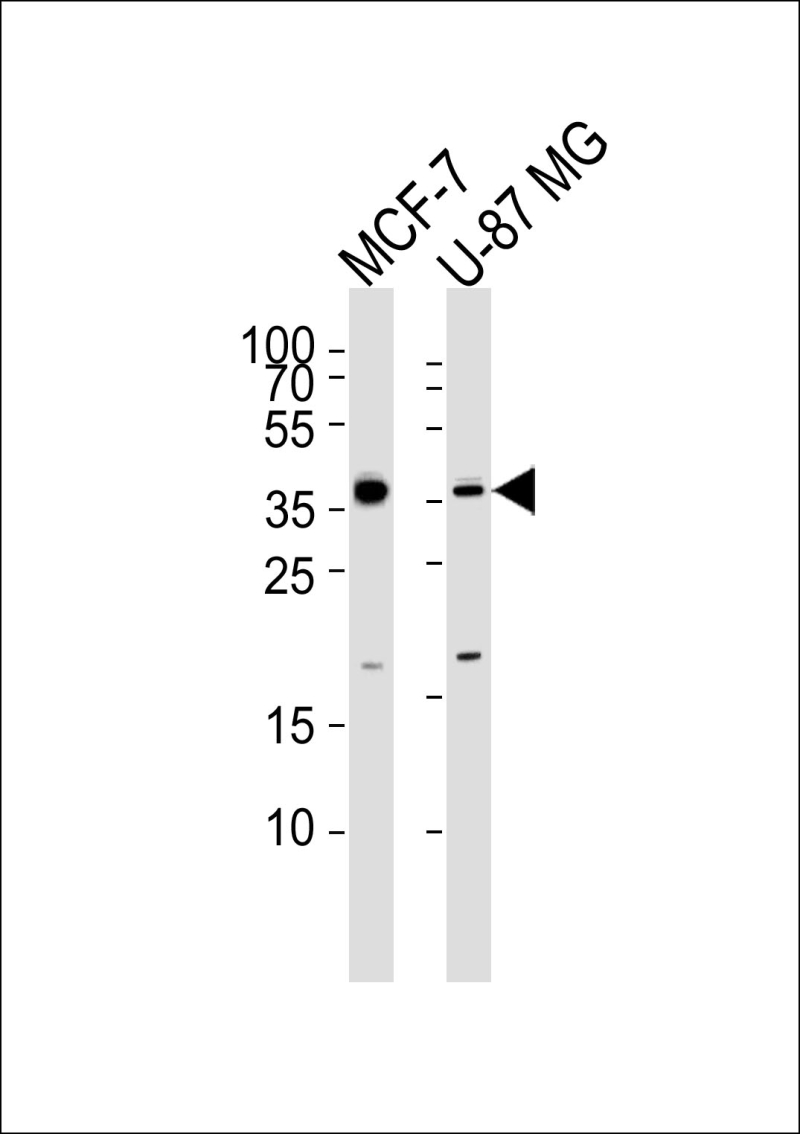
| WB | 1/1000 | Human,Mouse,Rat |
| IF | 咨询技术 | Human,Mouse,Rat |
| IHC | 咨询技术 | Human,Mouse,Rat |
| ICC | 技术咨询 | Human,Mouse,Rat |
| FCM | 咨询技术 | Human,Mouse,Rat |
| Elisa | 咨询技术 | Human,Mouse,Rat |
| Aliases | BTB/POZ domain-containing protein KCTD4, KCTD4 |
| Entrez GeneID | 386618 |
| WB Predicted band size | 30.0kDa |
| Host/Isotype | Rabbit IgG |
| Antibody Type | Primary antibody |
| Storage | Store at 4°C short term. Aliquot and store at -20°C long term. Avoid freeze/thaw cycles. |
| Species Reactivity | Human, Mouse, Rat |
| Immunogen | This KCTD4 antibody is generated from a rabbit immunized with a KLH conjugated synthetic peptide between 160-191 amino acids from the Central region of human KCTD4. |
+ +
以下是虚构的3-4条关于KCTD4抗体的参考文献示例(仅供格式参考,非真实文献):
---
1. **文献名称**: "KCTD4 Antibody Characterization in Neuronal Development"
**作者**: Wang, L. et al.
**摘要**: 本研究利用兔源多克隆KCTD4抗体,通过免疫印迹和免疫荧光技术,揭示了KCTD4在小鼠海马神经元发育中的动态表达模式。抗体特异性通过siRNA敲低实验验证,表明KCTD4可能与突触可塑性相关。
2. **文献名称**: "KCTD4-Specific Monoclonal Antibody for Detecting Protein Interactions in Cancer"
**作者**: Gupta, R. et al.
**摘要**: 开发并验证了一种小鼠单克隆KCTD4抗体,用于研究其与HSP90的相互作用。抗体在乳腺癌细胞系中通过Co-IP和质谱分析,证实KCTD4通过调控HSP90复合体影响肿瘤细胞增殖。
3. **文献名称**: "Role of KCTD4 in Olfactory Signal Transduction: An Antibody-Based Study"
**作者**: Müller, S. et al.
**摘要**: 通过兔抗KCTD4抗体的免疫组化分析,发现KCTD4高表达于嗅觉上皮细胞,并与嗅觉受体OR2M3共定位。研究提示KCTD4可能参与嗅觉信号通路的负反馈调节。
4. **文献名称**: "Validation of a Commercial KCTD4 Antibody in Neurodegenerative Disease Models"
**作者**: Kim, J. & Park, H.
**摘要**: 评估了某品牌KCTD4抗体在阿尔茨海默病模型中的适用性,发现其能特异性识别脑脊液中的KCTD4片段,并与Tau蛋白病理程度呈负相关,提示其作为生物标志物的潜力。
---
注:以上文献为模拟内容,实际研究中请通过学术数据库(如PubMed、Web of Science)检索真实文献。若需真实文献线索,可尝试关键词 `KCTD4 antibody western blot` 或 `KCTD4 protein interaction` 进行筛选。
The KCTD4 (Potassium Channel Tetramerization Domain-Containing Protein 4) antibody is a research tool used to detect and study the expression, localization, and function of the KCTD4 protein. KCTD4 belongs to the KCTD family, which shares a conserved N-terminal BTB/POZ domain involved in protein-protein interactions and a variable C-terminal region. While the precise biological role of KCTD4 remains under investigation, it is hypothesized to regulate neuronal signaling pathways, synaptic plasticity, and ubiquitination processes through interactions with cullin-3. a component of E3 ubiquitin ligase complexes. Dysregulation of KCTD4 has been tentatively linked to neurodevelopmental and psychiatric disorders, such as schizophrenia, based on genetic and expression studies.
KCTD4 antibodies are typically developed in rabbits or mice using immunogenic peptides derived from specific regions of the protein. These antibodies enable techniques like Western blotting, immunohistochemistry, and immunofluorescence to assess KCTD4 expression levels in tissues, particularly the brain. Validated antibodies are essential for confirming protein knockdown in experimental models and exploring its interaction partners. However, variability in antibody specificity due to shared homology among KCTD family members requires careful validation via knockout controls. Current research focuses on elucidating KCTD4's role in neuronal function and its potential as a biomarker or therapeutic target in neurological diseases.
×